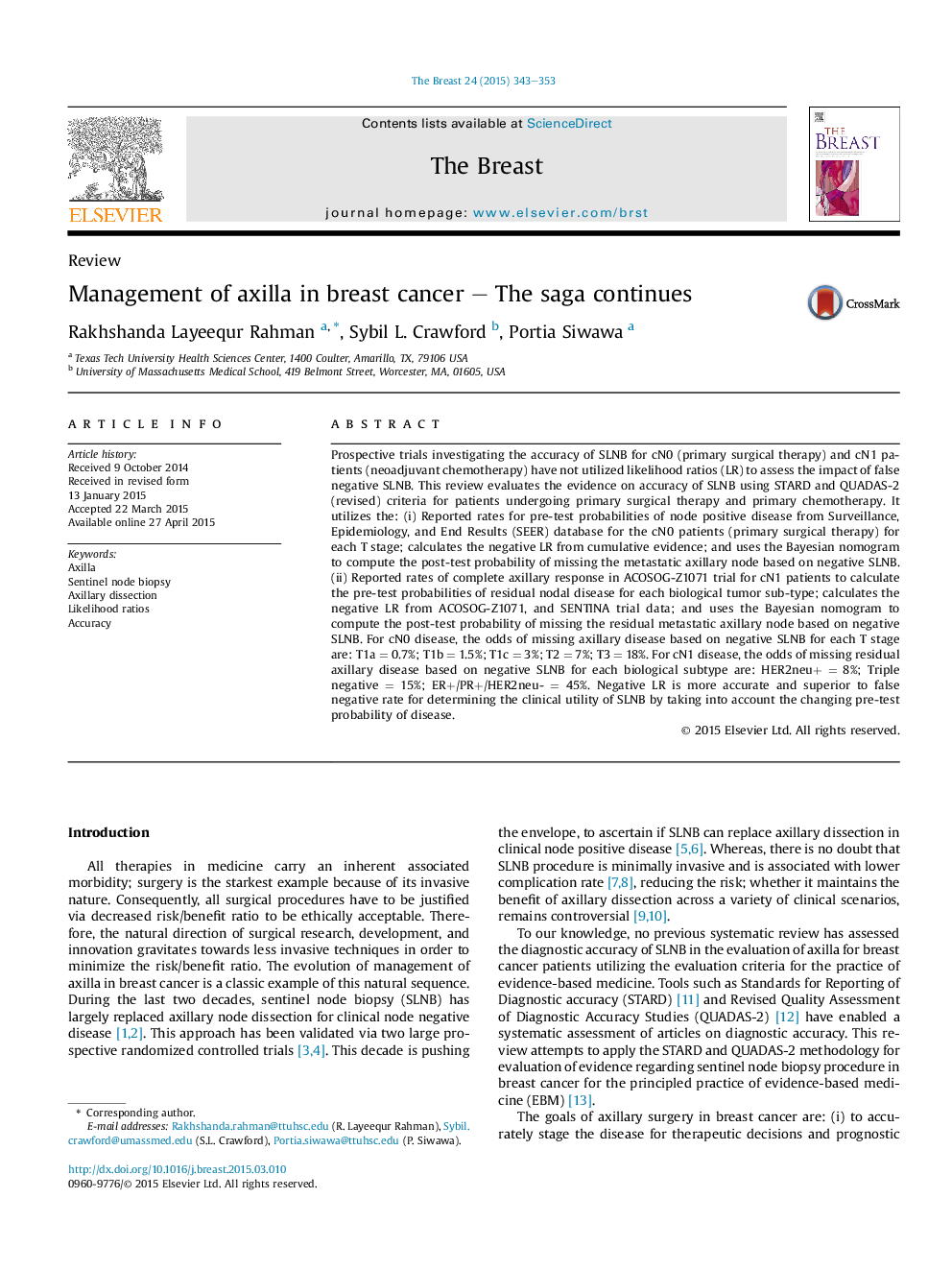| Article ID | Journal | Published Year | Pages | File Type |
|---|---|---|---|---|
| 6169588 | The Breast | 2015 | 11 Pages |
Prospective trials investigating the accuracy of SLNB for cN0 (primary surgical therapy) and cN1 patients (neoadjuvant chemotherapy) have not utilized likelihood ratios (LR) to assess the impact of false negative SLNB. This review evaluates the evidence on accuracy of SLNB using STARD and QUADAS-2 (revised) criteria for patients undergoing primary surgical therapy and primary chemotherapy. It utilizes the: (i) Reported rates for pre-test probabilities of node positive disease from Surveillance, Epidemiology, and End Results (SEER) database for the cN0 patients (primary surgical therapy) for each T stage; calculates the negative LR from cumulative evidence; and uses the Bayesian nomogram to compute the post-test probability of missing the metastatic axillary node based on negative SLNB. (ii) Reported rates of complete axillary response in ACOSOG-Z1071 trial for cN1 patients to calculate the pre-test probabilities of residual nodal disease for each biological tumor sub-type; calculates the negative LR from ACOSOG-Z1071, and SENTINA trial data; and uses the Bayesian nomogram to compute the post-test probability of missing the residual metastatic axillary node based on negative SLNB. For cN0 disease, the odds of missing axillary disease based on negative SLNB for each T stage are: T1a = 0.7%; T1b = 1.5%; T1c = 3%; T2 = 7%; T3 = 18%. For cN1 disease, the odds of missing residual axillary disease based on negative SLNB for each biological subtype are: HER2neu+ = 8%; Triple negative = 15%; ER+/PR+/HER2neu- = 45%. Negative LR is more accurate and superior to false negative rate for determining the clinical utility of SLNB by taking into account the changing pre-test probability of disease.
